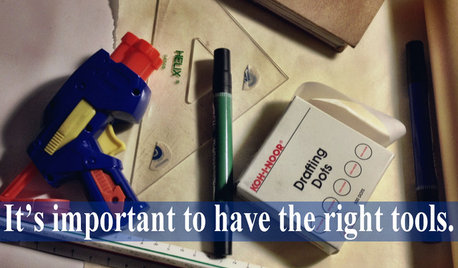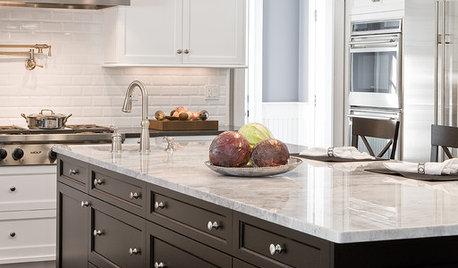Am I missing nutrients by only having browns about once a year?
little-river-dog
10 years ago
Related Stories

COLORHave You Heard the Hues? 15 Colors You May Not Know About
Name-drop these shades at holiday parties — or better, try one on your walls — and expand your palette possibilities
Full Story
COFFEE WITH AN ARCHITECTWhat My Kids Have Taught Me About Working From Home
Candy and Legos aren't the only things certain small people have brought to my architecture business
Full Story
FUN HOUZZEverything I Need to Know About Decorating I Learned from Downton Abbey
Mind your manors with these 10 decorating tips from the PBS series, returning on January 5
Full Story
FARM YOUR YARDIf You Have Room for Only One Summer Crop ...
Get an edible that’s long on flavor even if you’re short on space, with a long-time gardener’s favorite picks
Full Story
COLORHow to Use Marsala, Pantone’s 2015 Color of the Year
Pantone digs deep and goes earthy with its selection. Here are ways to make it work in your home
Full Story
LIFEThe Beautiful Thing About Dad's Chair
My father had his own spot in the house. His father had his own spot. Now I have mine
Full Story
FARM YOUR YARDIf You Have Room for Only One Fruit Tree ...
Juice up a small garden with one of these easier-care or worth-the-effort fruit trees for a mild climate
Full Story
KITCHEN DESIGN12 Ways to Have a Nicer Kitchen This Year
Give your kitchen a few upgrades and you'll love the time you spend there even more
Full Story
MOST POPULARBlast Decluttering Roadblocks Once and for All
Change your thinking to get the streamlined, organized home of your dreams
Full Story
CONTEMPORARY HOMESHouzz Tour: A Wine Country Home, Reinvented Once Again
Ten years after its first renovation, a 4-bedroom Northern California house gets another redo — this time with timelessness in mind
Full Story





klem1
nc_crn
Related Professionals
New Bedford Landscape Architects & Landscape Designers · Middle Island Landscape Architects & Landscape Designers · Golden Gate Landscape Contractors · Gresham Landscape Contractors · Los Banos Landscape Contractors · Norwalk Landscape Contractors · Oviedo Landscape Contractors · Rancho Santa Margarita Landscape Contractors · Stony Brook Landscape Contractors · Thornton Landscape Contractors · Wilsonville Landscape Contractors · Fredericksburg Decks, Patios & Outdoor Enclosures · Crystal Lake Decks, Patios & Outdoor Enclosures · Lincolnton Decks, Patios & Outdoor Enclosures · Oak Ridge Decks, Patios & Outdoor Enclosuresken_mce
Kimmsr
TXEB
toxcrusadr
TXEB
nc_crn
TXEB
Kimmsr
TXEB
lazy_gardens
toxcrusadr
TXEB
billums_ms_7b